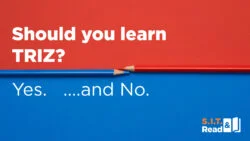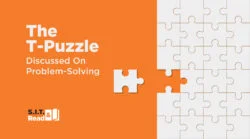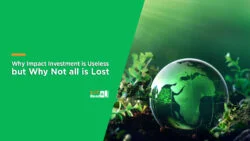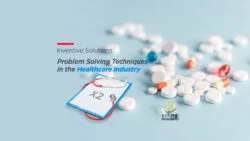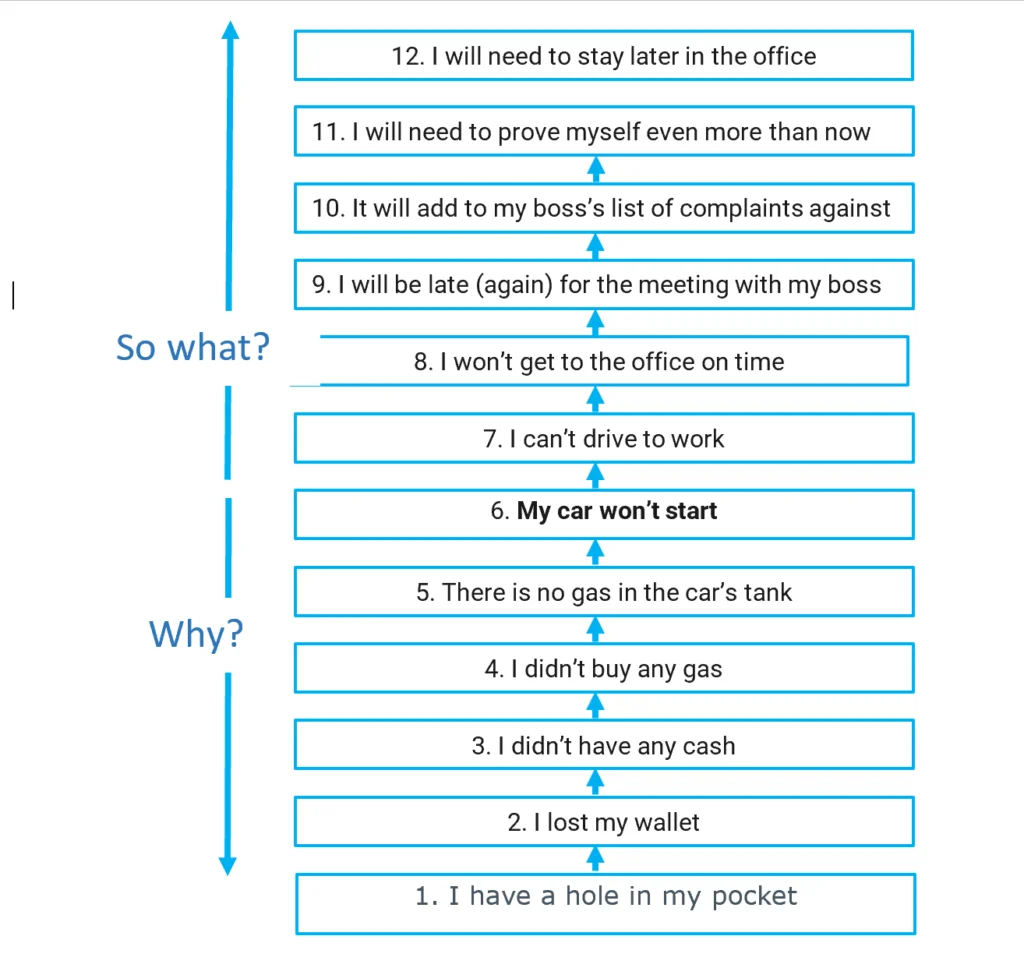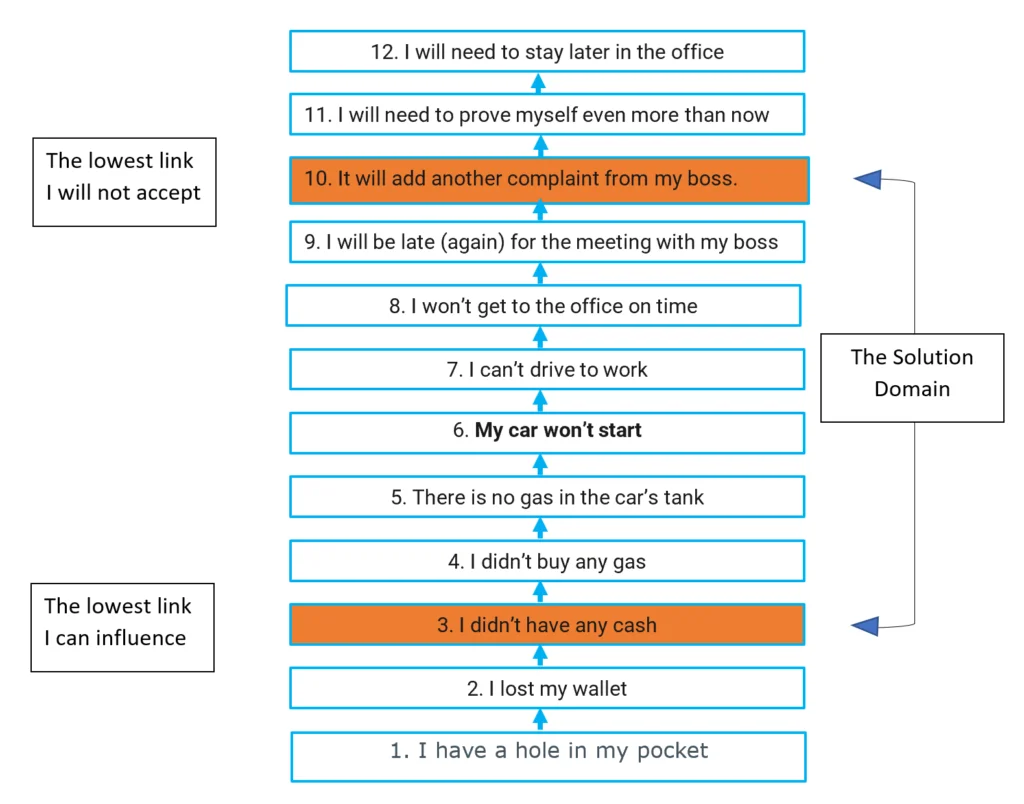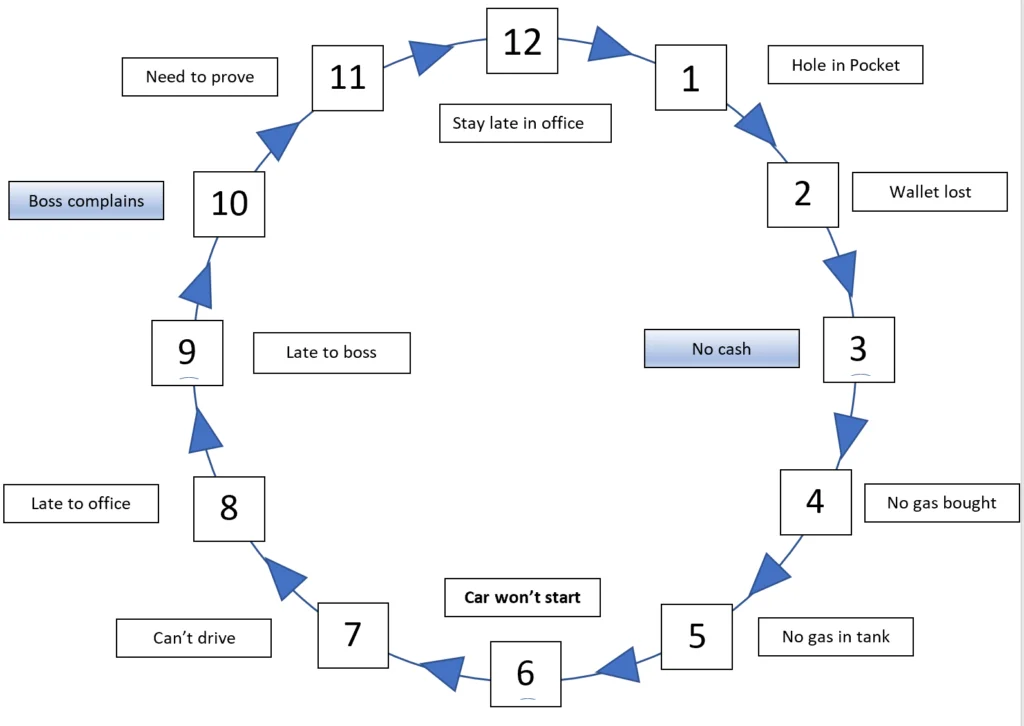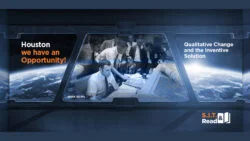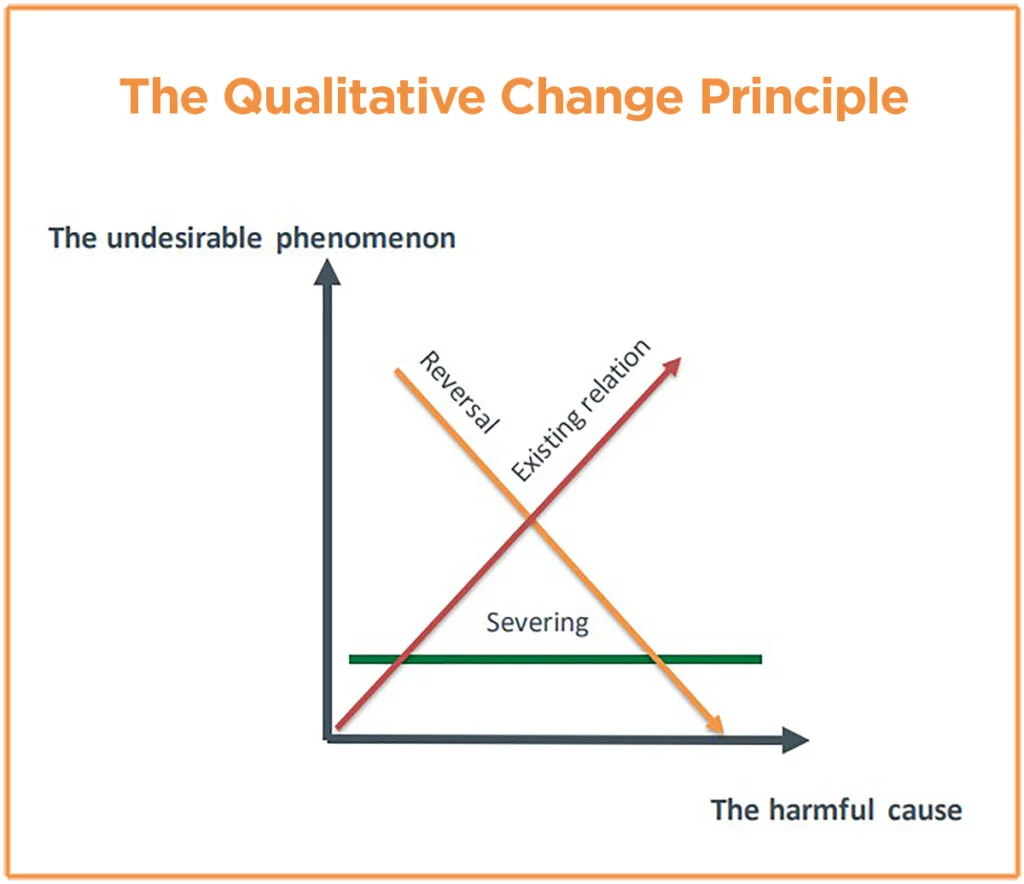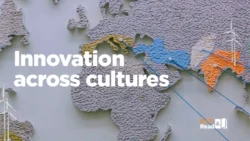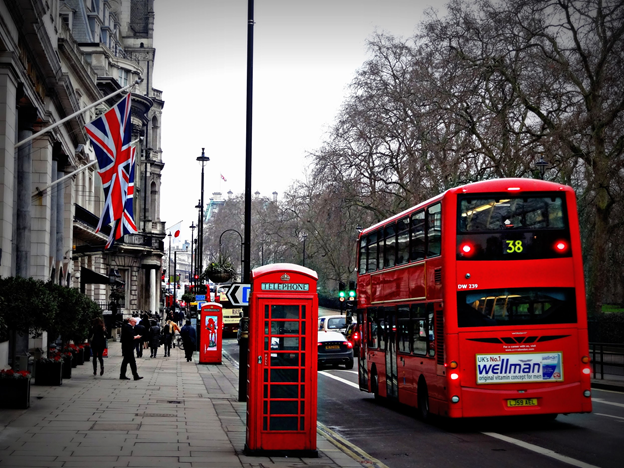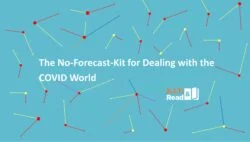A Short Article, a Toolset and a Loooong List of Vectors
The purpose of this post-COVID Kit is to help guide your thinking and discussion about a crucial issue: how should one prepare for and live with the changes brought about by the global pandemic. In the first two pages, I describe a certain approach to the issue, of which the gist is: do not attempt to forecast what is going to happen, but pay close attention to certain forces, vectors or trends, and figure out how they can influence you and your organization, and then try to proactively engage with these developments. The second part is a set of questions, based on SIT’s methodology for innovation, that allow you to convert the list into a practical exercise in thinking about the future. The third, and last part is a list of 23 topics, each followed by 5-10 bullet points, each of them pointing to at least two directions, often contrary, in which some force or vector can play out in the coming months or years.
Contents
Article
Toolset
A. Exploring the list
B. Breaking Mental Fixedness*
1. Task Unification*
2. Subtraction*
3. Qualitative Change*
List
A. Individuals, Families
1. Mindset and Attitudes
2. Mental Health
3. The Family
B. The Collective
1. Society
2. Education
3. Communications
4. Government
5. Religion/Spirituality
6. The Arts
7. Travel and Tourism
C. Health, Science, Technology
1. Public Health
2. Science
3. Technology
4. Data
D. The Globe, the Planet
1. Sustainability
2. Global Politics
3. Global Economy
E. Work, Business
1. Work, employment
2. Business: General
3. Retail
4. Supply chains
5. Transportation
6. Manufacturing
Article
I am not a futurist, nor are my colleagues at SIT – Systematic Inventive Thinking. As famously remarked by Niels Bohr, “Prediction is very difficult, especially about the future”. And much more so, when a cataclysmic event of global magnitude is unfolding as we write. What we specialize in, and what this document is about, rather than exploring predictions about the future, is attempting to shape this future, even if on a modest scale.
There are two confounding aspects of the attempt to forecast even the near future in 2020. The first is the well-known butterfly effect, but with billions of butterflies fluttering their wings simultaneously in an unprecedent manner. Thus, the Mozart of 2040 may have found her vocation when her mother, after 30 days of quarantine, out of desperation, downloaded a piano-teaching app to calm the noisy 3-year-old. The second is the appearance of strong and often opposing vectors that seem to cancel each other out, but, in fact, do not. So if a million couples who otherwise would have stayed together are driven to divorce, while another million couples about to divorce rediscover the bonds that held them together and don’t, in term of global statistics nothing has changed, but for two million families life’s course has swerved dramatically.
But, even though the ability to forecast with a high probability of success is very limited, it is still extremely useful, even necessary to pay close attention to some strong vectors or forces that are emerging as a result of the virus and, even more so, the various manners in which the world has chosen to deal with its effects. There are two prevailing views as to the changes: they, too, are contradictory, and yet both can prevail at one and the same time. One view holds that in the end, most people, and definitely businesses, are looking more than anything to resume life as it was pre-COVID. Expect, therefore, relatively small changes, mainly temporary adjustments. The other party claims the opposite: the pandemic, with its imposed restrictions and behaviors, has triggered changes so fundamental, that humanity cannot but evolve into a state of “new normal”. I use the expression “party” advisedly because I believe that both views have an element of “wishful forecasting”; those who wish to maintain the status quo are attempting to will reality to do so, and those who see an opportunity for – finally – a major upheaval, are loath to give it up. In this document, true to the spirit of our approach, we claim that both can, in a sense, be right at the same time. Each view represents a strong and potent force pushing in a contrary direction, and as reality will be shaped by the interplay between both, it would be wise for any individual, group or organization to consider the potency of both without trying to conjecture which will prevail.
Below, you will find a non-exhaustive list of 23 areas in which one can expect the world to change following the COVID crisis. There is no attempt here to predict what will eventually happen in any area, only to map some relevant vectors of potential change in each of them. In many cases, the vectors are contrary in their directions, which raises two questions: what is the value, or is it not tautological to claim that, for instance, people will either strongly yearn and search for the contact of other humans or will develop a defensive stance of distancing themselves from their fellow inhabitants of the globe. Our claims are that both vectors are very likely to be felt post-COVID, and that they will not necessarily cancel each other out. The way this will unfold is difficult to predict, but if your business or organization depends on prospects’ relation to other humans, for example, you would be wise to consider that many of them will probably be living with the conflict of both feeling strongly the need for human contact, and fearing its risks and consequences.
Another example: Say that you need to make decisions that depend on the future of shared rides globally. Do we predict an increase post-COVID, with a strengthening of the Ubers of the world, or rather a decrease, as new models emerge, or passengers return to pre-rideshare habits? The most useful answer may be a combination, or at least an invitation to consider at least two tendencies. The first is an aversion of potential riders to spending time in a confined space with people of whose health they have no information or guarantee, touching surfaces that have probably been in contact with other strangers not so long ago. The second is a set of economic pressures that may push both users and drivers to depend even more on shared rides, the former due to difficulties in owning a car and the latter as their only alternative for employment. In addition, the evolution of shared rides may be affected also by other tendencies, with their own combination of (sometimes conflicting) vectors: will the post-COVID world be (even) more unequal, or will this crisis be an inflection point, by exposing the perils of inequality and the interdependence of rich and poor, thus pushing towards creating a more level playing field?
Thinking about the food and beverage industries, to look at yet another case, can we expect a strong consumer tendency to seek healthy food, finally acknowledging that rather than trusting their fate to vaccines and antivirals one’s first duty towards oneself is to keep healthy, by, among other means, eating fresh and natural food? Or, alternatively, will we see a surge in consumption of fast (and junky) food, due to fatalism (“Why should I give up the food I like, if a random virus can kill me anyway?”) or to a habit created or strengthened by weeks upon weeks of ordering pizzas and hamburgers in quarantine? Our prediction: both. Recognizing these two highly probable and opposing vectors, a corporate player in this space could reach one or several practical conclusions, all logically, if not always ethically, valid. For instance:
a) Gamble on the healthy option, using the opportunity to dare not only to supply the partly-met need of health seekers but also to lead the laggards into healthy consciousness.
b) Play the fast food card, not necessarily cynically, but catering to the “new lazy” who absolutely refuse to cook, by competing with take-aways and expanding the variety of easy food for the home.
c) Recognizing both tendencies, find ways to provide offerings that answer both the desire to be healthy and the tendency to outsource household tasks.
d) Lead a revolution in the role of food manufacturers in society and the economy, by recognizing their critical share of the responsibility for public health.
e) Disregard the health issue, and focus, instead, on convenience and/or safety as the greatest consumer concerns.
We see, therefore, that even lacking a crystal-ball-clear view of the future, one can engage actively in creating it. Disregarding COVID- related developments comes at a risk, since what can be expected with high probability is that COVID will cause a ripple effect of strong forces or vectors for change. But, contrary forces at play again, when imagining the unfolding of exciting and/or frightening (depending on one’s imagination and inclination) futures, one should never underestimate the strength of individuals’ and societies’ tendency towards homeostasis, a tremendous pull to what feels like the safe equilibrium of old and comfortable habits.
To summarize: trying to forecast – futile; but watching trends, interpreting them, figuring out possible effects and proactively attempting to adapt and influence the future – a must.
Toolset
There are multiple ways to use the list below, some of them are presented here, divided in two modules:
A) A set of questions that help in exploring the list systematically;
B) Several tools for challenging your assumptions and opening your minds to come up with inventive ideas to deal with the phenomena described in the list.
A. Exploring the list
- Read though the topics, enjoy entertaining your own thoughts, guesses and predictions about each area;
- Identify those areas that are relevant to you, your organization, your business, and ask yourself what the probabilities for certain futures are, and what would their emergence mean for you;
- Select one or two areas that don’t feel directly relevant to your organization, activity or business. Challenge yourselves to figure out whether and how these seemingly unrelated forces will in fact influence you;
- Most challenging, but potentially most rewarding: which futures do you feel strongly about, and what can you do to increase the probability that they, rather than their alternative, comes to pass.
- Focus on an area/topic and add vectors and forces to the list. Discuss them as well.
- Review the “positive” vectors: how can you strengthen them?
- Review the “negative” list: how can you overcome these?
B. Breaking Mental Fixedness*
In this section, a set of mental tools is presented, that allows, in addition to stretching one’s mind as recommended above, to tackle head on one’s “mental fixednesses”, the patterns that restrict a thinker to old and well-trodden paths. There are additional tools in the SIT method that can be applied as well, but these are some of the most obvious candidates.
1. Task Unification*
a) Select a certain force or vector, which intuitively seems to be working in your favor in some way;
b) Ask yourself: can I see this vector as a resource? Meaning, can I make it work for me?
i) By acting to promote one of my objectives?
ii) By acting to promote something positive that I had not been aware of?
c) Now select a vector or force that intuitively feels as if it can affect you negatively.
d) Repeat the resource exercise (1b) with the “negative” vector, but this time you will need to overcome your intuitive negative sense of this vector, since you will be searching for ways to employ it in your benefit. Ask yourself:
i) Can this, supposedly negative vector, actually work in my favor?
ii) What would I need to do to make this happen?
2. Subtraction*
a. Some of the vectors, trends or forces will cause certain elements which seem crucial to you, your activity or your business to simply disappear, or be radically reduced temporarily (e.g. tourists for an airline, during quarantine). By browsing the list, take note of these cases as they apply to you. This disappearance we call a Subtraction.
b. For each of these cases, ask yourself the counter-intuitive question: what can you gain, how can you benefit, and which opportunities will open up thanks to this subtraction? Can it be that, even when the temporary subtraction ends (say, tourists return), you can continue doing some or all that you put in place when they were gone?
c. Ask yourself the following counter-intuitive question: COVID is forcing you to do without element X (say, face-to-face meetings), and you are learning how to manage with this subtraction, and even find benefits in it. What if COVID would have forced you to do without element Y (say, without meetings at all, or without internet connections)? Can you think of benefits for that as well? Is it worth experimenting with this option?
3. Qualitative Change*
a. Each force, trend or vector you review immediately conjures in your mind a certain chain: if A will indeed happen, so will B. Sometimes B will be negative, which means that you will automatically view A as negative as well (since it seems to inexorably lead to B). Identify an A that seems to lead to a negative B.
b. Create two sentences to use as triggers for invention:
i. Given A, how can you prevent B from happening?
ii. Can you imagine a context or situation in which: the more A the less B? Meaning, even though as A grows there normally is more of (negative) B, can you imagine a situation in which the relationship is flipped so that the more A the less B?
c. Repeat (3b) with other forces or vectors.
*These tools and principles are part of the SIT – Systematic Inventive Thinking methodology. Read more about them, and their use, in www.sitsite.com
List
This list of forces, trends and vectors covers 23 areas, that are divided into 5 general groups (A-E). It is obviously not exhaustive, nor is it meant to be, but rather covers a wide range of points of view that can serve as triggers for a productive discussion of the Post-COVID world, with or without the recommended Toolset. The list is long. Browse it at leisure, perhaps turning both to some areas that are directly relevant to what you care about, and some that initially feel further away. You will probably be surprised to find that contemplating some of the latter can turn out to be just as productive.
A. Individuals, Families
1. Mindset and Attitudes
a. Work-life balance. Millions desperately returning to work after being kept away for months versus millions discovering the joys of spending time at home rather than at work.
b. Approach to nutrition: realization that the best way to protect oneself is by maintaining good health, and this is possible through nutrition, versus, health can always be maintained through medication, versus, live as you please and trust the system to treat you when you fall ill.
c. The natural quest for convenience maximized in certain societies where all basic needs are delivered immediately with a digital click, versus the need to factor in safety as the overriding consideration in consuming, and balancing these requirements with cost.
d. Invitation to humility – human beings cannot control everything, versus a deep-seated human hubris – the belief that in the end our science and technology prevail.
e. Belief in science: in times of crisis we can only trust our scientists, versus “science failed us when most needed, and scientists can’t even agree among themselves about the basics of the pandemic”.
f. Individuals feel debilitating uncertainty, living a situation akin to cultural shock, as regular assumptions cease to apply to reality: a strong urge to surrender your decision making to authorities, to those “who know”, versus an impulse to seal out disturbing information and trust one’s intuitions.
g. Impressively, extremely complex and multi-faceted problems can be broken down into sub-tasks and solved by a distributed multi-team effort, versus, even the combined efforts of global talent and technology could not overcome a simple virus.
h. Feeling of dependence on humans, versus dependence on technologies. When push comes to shove only our fellow humans can give us the strength and energy to survive, versus: distanced and split from our fellow humans, our reliance on technology is near total.
i. Apart from phenomena that defy the laws of physics, will we ever be able to say again, of anything, even the wildest scenario, that it is improbable, much less “impossible”?
j. Has this crisis completed the rewiring of our brains, creating humans who can capture and digest only the briefest and simplest twitterized communications, or have we benefitted from this time of relative tranquility and immobility to read, think and discuss profoundly about important issues?
2. Mental Health
a. Immediate results of the crisis: depressions, anxiety, solitude, or recognizing one’s internal strength and abilities to adapt and overcome adversity.
b. Usage of psychiatric drugs: increased dependency, versus forced cold-turkey and freedom.
c. Addictions: increase due to stress and depression, discontinued rehab programs, solitude, versus forced rehab through scarcity induced withdrawal.
d. Stress levels at record high due to frightening messages and general feeling of impotence, uncertainty and lack of safety nets, versus finding calm in the tranquility of one’s home and proximity of family.
e. Solitude: for the world’s growing number of single-person households, for those whose families do not provide comfort or company, for those who find themselves far from their homes, others?
3. The Family
a. Rethinking, re-feeling the importance of one’s nuclear family, if there is one, or of having one if you don’t, versus the oppressive feeling of being unable to physically break away from it.
b. Need for keeping close to other humans, versus benefits of social distance, overdose of proximity.
c. Baby boom with welcome/unwanted newborns, versus huge wave of abortions with related political/social conflict.
d. The elderly – their important role in one’s life, their importance and contribution versus the price one pays for their well-being, alternative modes of communication.
e. Violence within the family – rapid escalation following weeks of lockdown, versus exposure of the problem and large-scale treatment by society.
f. Children-parents’ relationship: parents discover their kids who discover their parents and love it, versus same and can’t stand it.
g. What have children learned from the crisis? About their parents’ ability to control their reality, about their family, about the importance of schools, friends, hobbies, or lack thereof.
h. Opportunity for adopting and accepting alternative family models (non-traditional, non-nuclear) by understanding the huge importance of belonging to a community, versus hunkering back to the traditional model of the nuclear family?
B. The Collective
1. Society
a. The huge inequality challenge: the virus as universal equalizer (“does not discriminate by race or social status”), versus dramatic disparity in rates of illness and mortality along social and economic lines.
b. Realization that the well being of any member of society can strongly affect that of others, that social phenomena can become literally viral, can lead either to a strengthened sense of mutual responsibility towards all parts of society, or to even stronger separation and walling-in of the well off, as they separate and protect themselves from the masses.
c. Coming together or breaking further apart? Expressions and acts of solidarity with those regions or segments of society most affected by the illness, versus isolationist tendencies and blaming of the “other”.
d. Gender: reversal to traditional women’s role in the home accompanied by widespread violence in the family, versus full-time male presence and egalitarian sharing of all family tasks.
e. Gender: Men as weak sex, higher probability of infection, more liable to die, gap in average longevity grows in favor of women.
f. Gender: #MeToo post-CV: losing steam as humanity deals with a host of survival issues, versus returns with vigor, fueled by pressure cooker of quarantines and crisis.
g. Societies with high Gini Coefficients find that a crisis strains the fault lines, bringing to the fore suggestions like universal basic incomes on one hand, versus a reflex of the rich to prepare and protect themselves for future adversity.
2. Education
a. The role of the kindergarten. Massive realization of the crucial importance of this less prestigious and less budgeted step in the educational ladder, versus experiencing the huge advantage of young children’s spending many hours with their parents and siblings.
b. Homeschooling: the new wave or backlash. Waiting anxiously to re-deposit the kids into educational institutions, versus realizing that having them at home and spending time with them can be an enriching and feasible model for many.
c. Higher education: years of slow ascendance of MOOCs and other online courses accelerated to near-universal adoption of remote learning models vs. finer identification of those aspects that do require person-to-person interactions.
d. General reconsideration of the principal roles of education: transference of knowledge that is deemed important, creating good citizens or enabling individual development (as per Zvi Lam) – when education is decentralized to families.
e. Accelerating (finally) remote digital learning: leveling the playing field through more egalitarian digital education, versus a widening gap driven by high-cost superior digital content and platforms.
f. Opportunity to (finally) adapt pedagogy to technology. When teachers have no choice but to teach remotely, they are forced to adapt their pedagogy rather than falling back on traditional methods and skills, versus total collapse in pedagogy as traditional teachers give up and leave education totally to kids and their families.
g. Will disparity rise when/if a bigger part of education happens at home? Difference in parents’ ability to support home education can lead to focus on parent education, or extra support to counterbalance this effect, or it can lead to widening of the gap.
h. Widespread adoption of the flipped classroom model? Alternative model vying for widespread adoption for the past ~15 years, requires strong abilities of learning at home utilizing digital resources.
i. Education will be perceived by governments as a tool for creating obedient citizens for the next crisis, and therefore will receive extra budget and (at times repressive) attention, versus governments will prefer less educated populations, easier to control in times of crisis.
3. Communications
a. Role of social media explodes as the only option for maintaining social proximity while socially distancing, increasing the number of people for whom a “friend” is someone you exchange written messages with, and a “meeting” is virtual. Or, social media is mentally associated with lockdown and crisis, driving traumatized users to search for real-life contact.
b. Fake news vs. facts: establishing standards. It is no longer a game; fake news can kill you. Therefore, standards must be established. Versus, no one believes in anyone any longer – there can be no standards since there are no agreed upon experts.
c. Solitude. With technology, even when alone, we are not alone if we can communicate at a distance. Communication has always been crucial, but this has never been so evident. But for some, long stretches of lonely existence revealed how over-saturated they usually are, and how stress decreases when they are less communicated.
d. Decline of face to face interactions versus rebound and consciousness of how much we all need them
e. Growth and importance of independent (from government and business) media. Strong incentive to create and sustain independent outlets but, in parallel, stronger intervention of governments in setting media agenda and controlling media.
f. Digital media thrives as bored viewers are glued to the various screens, increasing exposure to advertising of all kinds, printed media on one hand has increased attention and demand, and on the other hand starved of advertising (plus dealing with logistics and distribution challenges) turns to digital or closes. Will a new model emerge, that can save print?
4. Government
a. Failure of democracies and advantages of authoritarian regimes in managing crisis situations and enforcing compliance versus failures of totalitarian systems due to lack of transparency, lack of initiative. Jury still out.
b. Local versus national. Only strong central government can deal with magnitude of crisis, versus local leaders and communities taking independent steps as required by their specific conditions.
c. Leadership and lack thereof: rise of the need for strong leaders vs. obvious weakness of relying on the wrong “pseudo strong” ones.
d. Alternative leadership roles: leadership vacuum creates need and opportunity for non-official or non-elected-officials to become the leading voices, or military figures to impose restrictions justified by “emergency measures”.
e. Balance between technocrats and politicians: strong need for politicians to closely consult with professionals on topics in which they have no idea, versus inaction due to endless discussions between experts and lack of authoritative professional answers.
f. Elections by digital platforms become necessary to avoid congregation, but fear of vulnerability and possible interference increases
g. Opportunity for autocrats to dismantle democratic norms and institutions vs. democratic popular backlash through digital platforms and “socially-spaced demonstrations”.
h. Governments’ responsibility to create safety nets for their citizens and population in general becomes obvious (even to “small government faithful”), versus individuals understanding that they can trust only themselves to prepare for next crisis.
i. Who do taxes belong to? Huge unprecedented spend of public money by governments with no clear source of funding, versus fear that this centrally directed spend will allocate resources unjustly and inefficiently
j. Governments must assume responsibility for well-being of immigrants, refugees and itinerant populations out of self-defense, versus migrant populations bearing the price of being away from home and family, and lacking support fro their host governments.
k. Smart cities – huge opportunity to build on existing infrastructures and accelerate development because of need for surveillance and tracking compliance, versus strong backlash due to privacy concerns.
l. Lockdown enforcement creates precedents of mass control over public behavior, especially in cities, versus shift of population back to villages and the country where isolation is easier and more convenient.
5. Religion/Spirituality
a. Role of faith for people dealing with crisis: huge win of science over religion for many, versus many others who find fortitude precisely in their faith and religious leaders.
b. Decision makers interact with scientists and rely only on data and hard facts, or realize the comprehensive nature of a crisis and carve a space for spiritual and religious leaders.
c. Role of moral leadership in determining strategy: place around the decision making table, versus support for their followers in reality that is a given.
d. Widespread belief in religious or spiritual interpretations of the pandemic (“God’s punishment for our sins” etc.), versus a division of labor between science as explanation and religion/spirituality as guides to behavior.
e. Moral reckoning driving people to organized religion, versus disappointment with minor role of religious establishment in preventing current sorry global state of affairs (pre-COVID).
6. The Arts
a. Halls and museums will fill up with thirsty art lovers kept away for a long time, versus persistent fear of agglomerations.
b. Public discovers that art can also be consumed from afar, leading to increased appreciation and interest in visiting museums and concert halls, versus leading to lazier habits of art-couch-potatoes.
c. Artists, musicians, dancers have all performed for us at home, many for free, and whetted our appetite to see them live once we can, expanded our horizons and made us better audiences, versus, we are spoiled now and want it for free and on the couch.
d. Variety of models for monetizing art emerge, as desperate artists find way to live from their art in the absence of live events, versus artists give up and find employment in other professions.
e. Collaborative art, facilitated by digital sharing, emerges as the new 21st century medium, or disappears as a fad post-CV.
f. Cross cultural art, free of geographic constraints, grows in importance as part of globalization, versus art follows xenophobic and nationalistic tendencies.
g. Free time at home serves as major opportunity for exposure to art, thus expanding the “base” of art-lovers, versus masses opt for low brow and less demanding activities in their CV-home-hours.
h. Future of museums and concert halls: adapting their physical spaces and installations to pandemic and post-pandemic requirements, versus expanding their strategies to reaching out and distance engagement with their publics.
i. Artists retreat into survival mode, versus celebrity artists follow Cardi B’s (and others’) example to take a strong stance in front of their followers.
7. Travel and Tourism
a. Visiting other countries will have lost part of its charm for some, but perhaps become a lifeline for the more claustrophobically-inclined.
b. Return in droves to beloved patterns of travel after lifting of bans, versus appearance of new models of tourism (socially-distanced? More local? Remote and isolated? Ecological?)
c. Technological solutions as enablers of travel: screening travelers for fever, filtering and protection in flights and other confined spaces, navigation and translation to minimize contact with strangers, etc. versus technology as a replacement for physical travel, as in VR and AR tours.
d. Post Corona border control using a variety of technologies to enable or restrict travel, by scanning, comparing data to data bases, identifying travelers’ conditions and more.
e. The future of Airbnb – crash as travel contracts, as does trust in the cleanliness and safety of private homes, versus rebound as the company adapts to new realities with novel measures.
f. Tourists prefer sea and sun tourism, away from the masses, versus tourists flock back to cities, thirsty for human contact.
g. Airplanes taking off dangerously after being grounded for weeks or months, versus fleets in best shape ever due to planes finally resting and receiving plenty of maintenance and attention.
h. Importance of hygiene on planes, passengers avoid confined cabins, preference for private flights.
C. Health, Science, Technology
1. Public Health
a. Discovery of fault lines: weakness emerges in supposedly robust health systems. Low correlation between national health expenditure and readiness of countries to confront the pandemic
b. Strong drive for change of a health system that is perceived as having failed in its main role, versus glorification of the health system that saved us all.
c. Gearing up for new strains and mutations: focus on solving the immediate legacy of CV-19 and its aftermath, versus searching for a universal solution to all future types of virus.
d. Change of priorities: investing heavily in hitherto impoverished national health systems, versus changing the paradigm and rethinking the entire model.
e. Recovering from damage wrought by distancing strategy: keeping the social-distance mentality with a stepwise approach to relaxing constraints, versus identifying the perils of distancing and finding ways to be safely together.
f. Immunization and vaccines: huge emphasis on search for an ever-expanding arsenal of vaccines, versus opting for alternative strategies to combat illness, given the obvious limitations of the vaccine strategy for influenzas.
g. Resource allocation: dramatic increase in budgets for public health, versus widening the gap between poor public services with a parallel system for the wealthy.
h. Scenario planning: strengthening and reopening of forecasting and preparedness units vs. perception that it is impossible to predict so better focus on generic preparations.
i. COVID-19 as “dry run”” for catastrophic scenarios: pandemics of a global scale and grave risks have occurred on average every 300-400 years, so the probability of another one soon is low, versus this was just a mild version of what we can soon expect to be hit by.
j. The ascendance of telemedicine. Necessity has proven that telemedicine is far more effective and accessible than anyone predicted, leading to rapid acceleration of the genre, versus CV exposing the dire need of personal and close primary care to maintain health and thus protect the population from future pandemics.
k. Importance of digital health: the huge importance of data, its analysis, translation into insights and rapid deployment of conclusions, versus the limitations of too much data leading to inconclusive or multiple recommendations and therefore paralysis.
2. Science
a. In the COVID global theater, science plays lead role of savior, only carrier of hope to billions, and is vindicated as the exclusive approach to dealing with any important challenge, versus powerful pull of religion and spiritual beliefs as only answer in a world devoid of certainties of any kind.
b. The sight of scores of highly esteemed scientists viciously disagreeing on what feels like hard facts erodes the credibility of science as arbiter of truth.
c. Science is fully harnessed to practical purposes, further strengthening the tendency to prefer applied science over theory, versus deep understanding that underlying basic science and theory are the basis of all the anti-COVID wizardry.
d. Countries find that organizing their efforts to confront the crisis requires a cross-disciplinary approach, as do scientists in search of cure or vaccine. Silos, once broken, will remain porous, versus a tendency, as problems become more complex and the need to solve them more acute, to specialize in ever narrower mini-fields enabling an even deeper understanding of limited phenomena.
e. Role of data as a leading tool in the process of science, often replacing the need for “wet” science, serving both as creator of hypotheses and their confirmation or refutation, versus anecdotal evidence that the clinician or experimenter in the field is privy to certain types of insight that the “cold numbers” will never reveal.
f. Even as huge collaborative data-driven science is being performed, a rise in the importance of good old observation, with scientific insights stemming from anecdotal clinical evidence accumulating in real time.
g. Enthusiastic embrace of cross and multi-country collaboration with science as the universal language of truth, versus enhanced competition between countries and realization that only few countries have the budgets and resources to conduct state-of-the-art research.
h. Cuts in funding for science and research as part of general tightening of budgets, versus increase in scientific spending as only defense against future pandemics and catastrophes.
3. Technology
a. Accelerated pace of technological development was already a cliché pre-COVID, but the dramatic need for immediate solutions, expressed in the towering price, both human and financial, of every day of delay, have pushed technology to hyper-agile tactics, even in traditionally cautious fields such as medical devices and pharma.
b. In parallel to the hubris brought on by a truly overwhelming display of technological prowess, humanity discovers the limits of its power in confronting nature. Specifically, Silicon Valley, the standard bearer of technologic dominance, disappoints in its inability to contribute much to crucial issues.
c. New synergies discovered and collaborations forged between experts in medical devices, various branches of drug development, public health specialists, physicists, computer scientists, mathematicians and others will evolve and expand, accelerating the trend for creating multi-disciplinary labs, projects and companies.
d. Regulation rises to the occasion, relaxes constraints and enables accelerated development, learning that it is possible and opening doors that will be hard to close in the future, versus regulation learns its lesson the hard way after irresponsibly relaxing in its role as gatekeeper resulting in faulty equipment, errors in tests and raising of unrealistic expectations for cures.
e. Technologies at the service of human and social control proliferate, for detecting, monitoring, controlling, nudging, tracking and analyzing behaviors, are accelerating ever more, while raising and confirming concerns over privacy and disregard for human rights.
f. A host of technological enablers of digital transformation, seen pre-COVID as promising but still out of reach, thrusted into public consciousness as they are harnessed for anti-COVID purposes.
4. Data
a. Dramatically ubiquitous, from popular media to sophisticated algorithms, nobody will ever doubt its importance, versus backlash that human phenomena, feelings, well being are irreducible to numbers and therefore data-based decisions should be limited in certain crucial domains
b. Data is a resource that grows in value when shared, and therefore huge push to share one’s data, versus data as scarce and most valuable of resources, and therefore tendency to greedily hoard it.
c. Citizens have become aware of the amount of data that governments possess relating to them. The good news: they are being listened to, their needs can be analyzed and treated, solutions can be customized. The frightening news: all the above can be converted to control and suppress.
d. New models emerge for sharing and ownership of data to allow both sharing and monetizing.
e. Crucial role of data in decision making: leaders realize that they need a dashboard of data to reach rational decisions, but the predominance of certain types of data (number of ill, number of dead) in public discourse also skews decisions towards simplistic approaches (e.g. decrease number of COVID casualties at the price of disregarding all other casualties and costs).
f. As the world’s reliance increases, so does the importance of mechanisms to validate their source, integrity and precision, but as the barriers to publish data diminish so does its fidelity.
D. The Globe, the Planet
1. Sustainability
a. COVID provided a demo of the planet resting, air quality, animals resurging – maybe this experience will make it harder to fall back to our old polluting ways?
b. An opportunity for global collaboration to save ourselves by slowing down the pace, versus each country frantically throwing itself back into the race to make up for lost time compared to others.
c. Can the world agree on Global Sabbaths? We saw that we can withstand weeks of time-out and even enjoy some of the consequences, so can we decide on a day per week? A week per year?
d. Heightened consciousness of the situation given the dramatic impact of the global pause, and therefore: Opportunity for a Global Green New Deal? Or backlash to put aside sustainability in favor of “more pressing” issues?
e. Remember that while we humans put ourselves on pause for the CV, global warming and related negative phenomena have (mostly) continued. Will this serve as an argument for or against human made global warming?
2. Global Politics
a. Humanity has finally united against a common, non-human enemy, and, realizing the huge potential of this unity, organizes itself to deal with the major global issues?
b. Nationalism and racism are further stoked by autocrats and shamed governments in search of scapegoats, while opportunities for “catastrophe diplomacy” abound, as traditional enemies express their solidarity sending materials and volunteers or sharing crucial information.
c. Xenophobia arises from fear of the other, the foreigner: “the virus” will always arrive from the outside, confirming deep seated fears of those who “don’t really belong here”, or “eat weird stuff”, etc.
d. New global organizations will be founded and existing ones strengthened as countries understand their crucial importance in defeating enemies that transcend borders, versus fatal weakening of global organizations as a chain effect of the US pulling out, cancelling its contribution to the WHO, blaming these organizations for the initial failure of global response to COVID.
e. As the role of data both increases and becomes more evident, and in parallel the most important challenges are recognized to be global, the need for a data sharing on a global scale is inescapable. The world creates the United Nations for Data.
f. Tectonic shifts among world’s superpowers: the US continues its decline, or proves its strength in rebounding and supplying the (bio?)technological solutions to the pandemic; Russia hit hard by plummeting petrol prices combined with what seems like inadequate and totally opaque treatment of the crisis; other BRICS in general in bad shape; EU while dealing with Brexit exposed as the elderly inefficient continent (in the south) or a model safety network for post-capitalism (in the north).
g. As traditional wars are put on pause, the rise of soft power in international relationship, expressed not in tanks and warships but through scientific, industrial and social strengths vs. rapid re-flame of numerous local and regional wars and fighting.
h. Increase in power of China and Asia, the “winners” of the crisis, vs. shrinking export from China and Asia due to CV trauma in rest of world
3. Global Economy
a. As countries and peoples realize that GDP does not ensure real prosperity, an opportunity arises to break away from GDP as the god of indicators, replacing it with more subtle and complex measures that capture well-being and are therefore better guides for national strategies.
b. What will happen with the huge and growing debts of governments, businesses and individuals?
c. Widening of the inequality gap between countries (those who won from the crisis vs. those who lost), or the crisis as equalizer, where giants fall to their knees and smaller, poorer countries forge ahead with minor injuries?
d. Trigger to scale down globalization, the great pandemic accelerator, versus opportunity to create a more fair, transparent, equitable model of globalization, increasing collaboration and interdependence.
e. Will international alliances and organizations impose criteria about readiness for crisis on their members?
f. Huge government bailouts: exacerbating inequality (taxpayers funding corporates), versus fairer models in which taxpayers share rewards of the bailouts as well as their risks.
g. Unprecedented stock and commodity market volatility leading to strong disillusionment with current investment mechanisms and corresponding losses as the public’s money flees to safer options, versus opportunity for even bigger gain for a connected minuscule minority.
E. Work, Business
1. Work, employment
a. Working from home, now proven to be effective, becomes widespread, versus emphasis on all we couldn’t achieve without physical presence will strengthen demand to be present. Will hybrid models proliferate?
b. Influence on home/office design and therefore on real estate?. Will offices become smaller and homes larger? Will this affect prices? Locations? Architecture?
c. Workplaces hygiene will become a dominant concern, versus the apparition of a “magic chemical” that will make efforts to maintain hygiene appear quaint in retrospect.
d. IT becomes even more important than it is today. It converts into your partner, holding your hand for all your remote activities. Dependence on IT grows – the worst thing that can happen to an employee is to be left without a connection.
e. The gig economy – exponential growth of the perfect format for digital experts, deliveries, nomads, minimizing proximity to co-workers, services for lockdown, outsourcing for cash deprived businesses, only solution for many employed and more.
f. The gig economy – dramatic weakening: fear of proximity to variety of strangers (Uber, AirBnB), workers yearning for the safety of a salary, pensions, safety net.
g. A great gap between how “essential” a worker is considered and how much they are being paid. Will essential workers be able to leverage the crisis to improve their lot, or will society search for and find ways to continue their exploitation?
2. Business: General
a. Values: a tremendous opportunity for businesses to live up to and showcase their values, accumulating loyalty points in the eyes of customers and prospects, versus moment of truth when values are shelved in favor of cost cutting and survival mode.
b. Recovery from the crisis. Most businesses will bounce back rapidly thanks to: pent up consumer demand, loans and grants injected by governments, benefits of low oil prices, accelerated COVID and health related activity, large government projects and contracts, or: Catastrophic slow recovery due to: huge debt, businesses who failed to survive the lockdown, furloughs converted into unemployed, unemployed failing to rejoin workforce, chain effect of businesses hit by low oil, inconsistent and insufficient governmental recovery plans, deflationary effects of uncertainty and fear.
c. Emerging and declining businesses (winners and losers from the crisis). Obvious winners and losers from lockdown: hand sanitizers, Zooms, take-aways, Netflixes, healthcare, analytics for the former; airlines, tourism, car makers, art industry in the latter. But, also, suppliers of the abovementioned and others influenced indirectly. In some of these “losing” categories, survivors may surprisingly end up way ahead of their pre-pandemic position thanks to the disappearance of competitors who did not survive COVID-death valley.
d. New and old competitors: united against the common enemy, companies frantically and generously opened their knowledge and markets to newcomers in order to jointly supply, say, masks or respirators, which may lead to a beautiful future of collaboration, or, to a fight to the death with newcomer competitors.
3. Retail
a. Buyers’ behavior post weeks/months of remote buying and limited budgets (for the majority): trend towards buying less, sticking to the necessary, versus hoarding mentality to prepare for any eventuality.
b. Limited movement drives shoppers back to small shops close to home, or strengthens large retail outlets that can offer and deliver bulk discounts.
c. Barriers broken for the pre-CV non-digital-savvy, leading to dramatically increased share of online shopping, or nostalgic impulse to return to the “good old shops” pre-CV.
d. Shopping centers, malls – will they survive the need for social distancing even months after the first wave abates? Will they evolve, in terms of interior design? Opening hours? Activities for shoppers (to keep them from running back home quickly)? Hybrid models of collaboration with digital channels?
e. Shops and independent retailers animated by close to home shopping, versus massive closures due to cash flow, loans, competition from large players?
f. New models of retail will sprout and grow, such as smart subscription retail (for those who can afford it), while the trend for locally sourced produce increases because of distrust of the far and foreign.
4. Supply chains
a. Push for cost saving and efficiency leads to leaner distribution structures, while worries about maintaining supplies in times of crisis drive preference for distributed supply chains, with hubs nearer to end users.
b. Strong push for 3D printing and on-site manufacturing or last mile assembly to skip steps in distribution, versus recognition of the limitations of these technologies.
c. Manufacturers will put a premium on old and trusted relationship with suppliers, who can be trusted to deliver under any conditions, or widespread search for alternative suppliers, and the safer redundancy of multiple suppliers.
d. Companies opting for large inventories vs. just-in-time with close-by reliable suppliers.
e. As commercial flights and other means of transportation are prohibited, their providers close and/or their prices rise, alternative options for delivery will appear: drones, finally?
f. The benefits of globalized supply chains have been emphasized by their absence, but so have the dangers of relying on them. As local governments invoke various versions of the “Defense Production Act”, will globalization continue or will there be increased focus on localization and supply chain continuity?
5. Transportation
a. Public transportation in pandemic times: increase in usage with alternative models, hygiene and spacing of passengers, versus decrease in usage per limited movement in public.
b. Rebound for autonomous shared vehicles, as users prefer to avoid proximity to drivers, vs. preference for own cars, with full control of access to strangers.
c. Uber and shared rides: surge as people avoid mass transport, versus crash as gig drivers without safety nets go bust vs. shift to drivers as employees
d. Strong adoption of alternative non-polluting fuels following rising consciousness of the damaging effects of oil-based, vs. return to oil guzzling habits due to record low prices.
6. Manufacturing
a. Increased automation to minimize dependence on virus-sensitive humans vs. increased use of humans for remote operation of manufacturing equipment.
b. Versatility – proven ability to switch to manufacturing totally different products in crisis mode may lead to adoption of this flexibility in commercial contexts.
c. On-shoring backlash to off-shoring trend driven by: governments’ efforts to “bring back jobs”, fear of geographically long supply chains and increased automation.
d. Focus on redesign of plants for distancing and hygiene? And/or emphasis on workers’ well-being and health? Voluntary or driven by legislation?
